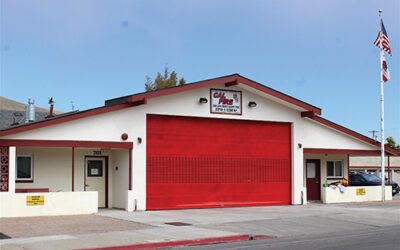San Luis Obispo’s unincorporated towns will soon join the cities and be signed up with a community energy company.
The current County Supervisors’ liberal majority continued efforts to overturn some of the controversial things the previous board — which had a conservative majority — had voted into place.
That includes overturning the approved Supervisorial District Map that the old board approved in 2022 and was used for last year’s Primary and General Elections.
The previous board voted against joining Central Coast Community Energy (3CE), a non-profit corporation that is essentially the middleman with electricity service.
How it works is 3CE buys renewable energy from various sources and delivers it via Pacific Gas & Electric’s infrastructure, to customers, which at this point includes most everyone on the Central Coast in Monterey, Santa Cruz, San Benito, SLO and Santa Barbara Counties; and all the cities here — Morro Bay, SLO, Paso Robles, Atascadero, Pismo Beach, Grover Beach and Arroyo Grande, some 447,000 total customers with 5,100 megawatts of annual demand, according to the company’s website (see: 3cenergy.org).
People can opt out in writing from 3CE if they want, otherwise, with the declarations by a city council or Board of Supervisors, 3CE becomes the default energy supplier, though customers must still pay PG&E a charge for use of its delivery systems.
The so-called, “community choice aggregation program,” is joined by approval of a “Joint Powers Agreement,” which makes electricity customers automatically included.
It was made possible by 2002’s Assembly Bill 117, which allowed cities and counties to act on behalf of their residents and energy customers in these Community Choice Aggregation (CCA) programs like 3CE, which is the most successful one to date.
“A CCA program,” reads a report from the County, “enables local governments to leverage the purchasing power of their residents, businesses, and governments to purchase or generate power for their communities. When a CCA program is formed, the CCA provider purchases the electricity, which typically includes a higher percentage of electricity from renewable resources like wind and solar, and sets the rates charged to its customers.”
The law allows 3CE to cut deals with power companies to buy their renewable energy and to reserve space in energy storage projects.
Among the goals is to promote renewable energy plants and to save customers money, though that really isn’t the main point.
“Ideally,” the County report said, “CCA program rates are designed to save community members on their energy costs. Though community choice aggregation cannot guarantee rate savings versus the investor-owned utility [IOU] in perpetuity, CCA rates are typically determined to be at a lower rate than the IOU’s rates. Energy rate options that include 100 percent renewable energy cost more than the standard rate, so cost savings are reduced for these rates, too.”
County Supervisors looked at joining 3CE in 2015 participating in a feasibility study along with Santa Barbara and Ventura Counties, according to the report. At least two other studies have been done more recently and in 2020 Supervisors sent a set of questions to 3CE (then called Monterey Bay Community Power) concerning where its power would come from, among other issues.
Last January Supervisors revived the issue during discussions on goals as part of the budget process instructing the staff to bring it back for a new look.


